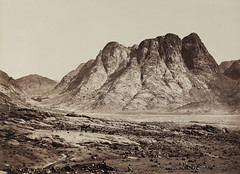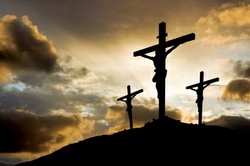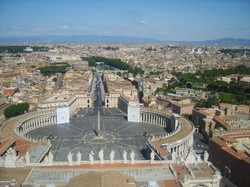"It's all myth, isn't it" the sceptic declared confidently. I have long bewailed the tendency of people to speak confidently about the Bible, without ever having read more than a tiny bit of it, if at all, and he had not troubled, it seemed, to read any of it. The trouble is that the Christian Bible is not one anthology, but two, and some books of the Old Testament are themselves compilations. The literature developed as oral tradition for some time in the second millenium BC, but the final element of the Christian Bible was written in the late nineties. [Claims that John's Gospel was written in the second century are now discredited.] The books were written in at least two languages, Hebrew and Greek, and some possibly had Aramaic originals. This is a complex text that requires detailed study.

Understanding Biblical Literature
by frankbeswick
The Bible is an anthology of books of different literary types that each require their own intepretation techniques
The Pentateuch
An anthology in itself
There are two broad theories of the Pentateuch, the five books of Moses, the first five in the Bible: Genesis, Exodus, Leviticus, Numbers and Deuteronomy. Literalists believe that Moses wrote the lot in one go; others recognize that there are different traditions woven into the text and that there were different sources that were compiled into one over a period of centuries, ranging from the tenth century B.C to the fifth. The latter theory is the most credible.
The dispute is whether the sources were documents or just oral sources, but, as they each have a clear structure, I think that the view that they were documents is the correct one, but this is not a view set in stone. To understand what occurred imagine four strands, each of a different colour. Weave the four together and then draw five lines across,dividing the rope into sections. This shows you how the Pentatuch came about.
The first is the Yahwist document, written about 900 B.C. This is known as Y or J as it uses the name Yahweh [Jahweh] for God, and it probably was compiled in the court of King Solomon. The Yahwist document runs from chapter two of Genesis write up to the story of David and Solomon, so it deals with Adam and Eve onwards. The material in Y is a collation of myths and folk history. The first ten chapters of it are myths, the rest is the folk history of the Hebrews, consisting of a collection of ancient tales. The writer had taken the myths of the Middle East and given them a religious angle.
The E source, which uses the word El for God, is thought to be seventh or eighth century and originate in the Northern kingdom of Israel. Some of the stories in Y are duplicated, but the compilers had so much respect for the document that they left nothing out, even duplicate stories.
The D document, the Deuteronomic History, is sixth century and begins with the Book of Deuteronomy and runs up to the exile. It draws on some now lost historical documents, but runs well beyond the Pentateuch.
The final source is P, the Priestly source, written about 450 B.C. This starts with the story of creation, and gives one of the two accounts of Noah's flood. It is responsibe for the whole book of Leviticus, which deals with ritual Thus you can see that even the first five books alone have a complex history.
Mount Sinai
Where Moses received the Commandments, Museum of Photography, Francis. F. Frith
 Mount Horeb - Sinai |
Other kinds of Literature in the Old Testament
The rest of the Old Testament divides into several kinds of literature: historical, prophetic, widsom and in some Bibles, Apocrypha, which are tagged onto Wisdom books..
The historical books run from Joshua through to the time of Ezra and Nehemia after the exile and deal with the history of Israel. They are composed by several authors. One is the Deuteronomic historian, but the author of the two books of Chronicles may well be connected with the P source. Each historian has their own slant and has to be analysed separately from the other.
Prophetic books constitute a major part of the Old Testament. There are four major prophets: Isaiah, Jeremiah, Ezekiel and Daniel, and there are twelve minor ones, whose books are short. But the literature in prophetic books comprises more than one kind. There are many oracles, but there are also narrative sections, particularly in Jeremiah, which tells the tale of the fall of Jerusalem towards the end of the book and the prophet's ordeal.
But the book of Isaiah is itself an anthology. Biblical literalists do not always realize that prophets lived in bands sometimes, and so it was possible for the oracles of a great prophet's disciples to be included with the works of the master, and let's face it, Isaiah called his wife the prophetess, so maybe some of her oracles are included in the book.There is nothing new about this, as the book of Judges tells of the prophetess Deborah. But the main prophets included in the book of Isaiah are: Isaiah of Jerusalem [eighth century] Deutero-Isaiah [which means second Isaiah] in the time of the exile; and Trito-Isaiah [third Isaiah] a century or so later.
There are also wisdom books.Ths is a broad category that includes Proverbs and Psalms, a collection of hymns. The wisdom literature is said to be the works of Israel's wise men. Often included in wisdom is Apocryha, a set of books not written in Hebrew, but Greek and so rejected from the Bible by Jews and Protestants. There are some sacred stories in here, such as the charming book of Ruth, which tells the tale of King David's grandmother and her struggle to survive as a widow.
New Testament Literature: Gospels
There are four kinds of literature in the New Testament: Gospel, Letters, Acts and Apocalypse.
There are four gospels: Matthew, Mark, Luke and John. There were, however, many more, but few were selected for inclusion when the authorized New Testament was compiled. The criteria for selection were strict. The gospels included were to have come either from an apostle or a source close to an apostle; and they had to be kerygmatic. Only four met these criteria. I had better explain what kerygmatic means. The kerygma is the early preaching of the apostles, found in Acts 2 and 13. Part of it is also found in Acts 7, Stephen's speech, but as he was murdered half way through, it is not complete. The kerygma follows this pattern:
Jesus Christ, a man attested by God through signs and wonders
Fulfiled prophecy
Lived a sinless life
Murdered by sinful men
Rasied from the dead by the power of God
Now Lord and saviour of humankind
Salvation comes through him by baptism into his community
The four canonical gospels are the only ones to have a kerygmatic structure. Others, such as Thomas, may contain genuine sayings, but are only sayings and not genuine gospels. Gnostic gospels were written far later than the canonical four, with the exception of Thomas, and therefore have no connection with apostolic sources. Muslims sometimes make a great deal of the gospel of the gospel of Barnabas, but despite its having a small amount of ancient material in it, it was written by a convert from Judaism to Islam about 1600 A.D.
Matthew, Mark and Luke are known as synoptic gospels, because they resemble each other. Mark it seems was the earliest, and the writers of Matthew and Luke used it as their source material. John is different, and was written over a period of decades, based on the testimony of the Beloved Disciple, thought by many to be John, but probably Lazarus. It underwent several revisions. It is, however, a carefully crafted book, written by an intellectual familiar with Jerusalem and with the literay, philosophical and religious culture of the ancient world. It is packed with symbolism and is best seen as a dramatization of Jesus' life
New Testament
 | Chant: Music For The Soul Chant, is the most peaceful music imaginable. Chant: Music for the Soul, is the ultimate in relaxation and stress relief - the perfect antidote to our fast-moving modern world. ... |
 | Lost in Meditation: Meditative Gregorian Chants Lost in Meditation: Meditative Gregorian Chants II by Capella GregorianaThis product is manufactured on demand using CD-R recordable media. Amazon.com's standard return policy w... |
Other types of book
There are three different kinds of book in the New Testament: Acts, letters and Apocalypse [Revelation.]The Acts of the Apostles tells the story of the early church, concentrating on Peter and then Paul. Much of the information about the early church comes from Acts, including accounts of the earliest Christian preaching. Acts seems to start where Luke's Gospel leaves off and is written in the same style. In fact, the writer speaks of his earlier work. Most Christians accept that it was written by the author of Luke's gospel, and some passages in the story of St Paul's final missionary journey speak of "we." It seems to have been written by a companion of St Paul, and Luke, a doctor, is a candidate. We must remember that in Paul's letters he speaks of an illness, but does not tell us what it was. A doctor might have therefore been a useful companion.
Letters [Epistles] were written by several people, and as usual their authorship is contested. But I find the sceptical position that none were written by their reputed autrhors incredible. Most were written by Paul, but there are some attributed to Peter, John, James and Jude. The first letter of John is written in the style of John's Gospel. It is also possible that the letter to the Hebrews.attributed to Paul, may have come from his colleague Apollos. Some of the pastoral letters may have come from sources other than Paul.
Revelation, the final book, is known as the Apocalypse to Catholics, as it is written in a style of writing called Apocalyptic. This is an imaginative investigation of the end of the age and the return of Christ. This book should be read carefully, as it is chock full of symbolism that needs careful reading. To read this book without a scholarly concern for symbolism is to be in danger of misunderstanding. Plenty of cults read this book too simplistically. And let us be clear: they seek a Bible code that is not there.
I have read the Bible, but I find some parts more useful than others. It is a book that is worth careful reading in an open minded, critical spirit.
You might also like
Who was JesusTo understand Jesus you must realize that he was a mystery that theology trie...
Ministry in the church:women bishopsThe long awaited decision to have women bishops is major progress.






 Pilgrimage. A review27 days ago
Pilgrimage. A review27 days ago
 Leo the Fourteenthon 05/09/2025
Leo the Fourteenthon 05/09/2025
 The Melsonby Hoardon 03/25/2025
The Melsonby Hoardon 03/25/2025


Comments
Yes. Oral tradition, to stone tablets, which ran concurrently, then to written documents describes the historical process well.
The introductory paragraph considers that "The literature developed as oral tradition for some time in the second millenium BC, but the final element of the Christian Bible was written in the late nineties."
Did the Biblical information pass from oral tradition to engraved stone tablets to written scrolls?
Proverbs is a usefulaid to prayerful reflection.
The last sentence in the last paragraph under the last subheading ends intriguingly about the varied usefulness of the varied books in our beloved Bible.
Would you find Proverbs a useful guide?
Thank you for this literary view of the Bible, it is interesting to read about a book that I've loved since childhood...it is important for me to read from this point of view. I see the comment about reading it in short sessions, so very true, and reflecting or meditating...but also there is a redemptive thread that spans from beginning to end that is clearly seen with open heart and eyes...it is not all a pretty picture, but there is redemption within and through it.
Thanks. The Bible should be read in short, sharp sessions, when we select a passage and reflect on it.
Thank you for this Frank. Most interesting. I can't say that I've read the Bible from cover to cover, but have read some of it and I agree with you, some parts are more useful than others. I'd be advocating "turn the other cheek" more than "an eye for an eye," for example.
Thanks very much. Your standard of Greek is impressive,mine is only koine, biblical Greek. I agree with your opinion on the veracity of the Bible and the Homeric tales. This is the Conservative Christian viewpoint, that the tale is substantially true, though without total factual accuracy due to fallible memory and embellishment
Interesting - while I was writing about 19th Century church organ music, you were polishing this off. Great minds... My Biblical history comes from studying Ancient Greek with a bunch of Theologians at Uni. The Hebrew-speakers' view of the Bible is very different from ours. And as far as I'm concerned, from a historical and Classicist point of view, it's all true. Embellished, perhaps, but it started out as true tales, just like Odysseus and Troy.
Thankyou Kathleen, I always have doubts about how my work will be taken.